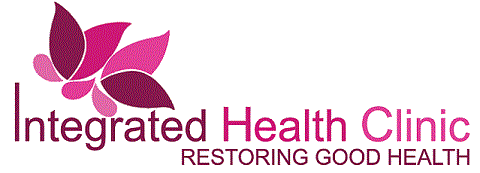Top level performance for Athletes and Performers relies not just on skill and experience but also their physical endurance, strength and psychological state. This is influenced by many factors including illness, injury, pain management and nutrition. Collectively, it determines their ability for a quick recovery and return to peek performance. Sports and performance Injuries are usually accompanied by physical pain, restriction in movement and weakness. In the initial stages treatment will involve managing pain and swelling and promoting healing. Further on it will involve specific exercises to regain mobility and flexibility and later muscle strength. During this time the use of nutrition, acupuncture and massage can assist by improving energy levels, tissue healing and pain management. Together they can be used to shorten recovery time for injuries, regain muscle strength and strengthen the immune system in healthy individuals but also particularly useful as a rehabilitative approach particularly when traditional methods of treatment have already been used. Post exercise the body’s immune system is temporarily lowered and there is an increased susceptibility to infections. For this reason quick recovery and staying healthy will improve an athlete’s or performers ability to train and therefore improve performance.
Treatment of Sports Injuries
Treatment of all injuries whether a mild sprain or minor muscle or ligament damage can be easily managed at home. The aim is to slow down or reduce the process of swelling and inflammation. In the first 48 hours the RICE therapy should be used. PRICE stands for Protection, Rest, Ice, Compression and Elevation.
- Protection – preventing further damage by protecting the affected area.
- Rest – the affected part of the body by reducing physical activity and regular exercise. Use of crutches and a walking stick can be helpful.
- Ice – Ice packs can be applied to the affected area for 10-30 min, alternatively a bag of frozen peas can be used. Ice packs should be wrapped in a towel to avoid direct skin contact which may cause ice burns.
- Compression – with elastic compression bandages will help to limit swelling.
- Elevation – of the injured limb by raising it above the level of the heart, which may also help to reduce swelling.
Once past the first 48 hrs of RICE therapy compression can be removed and more physical movement can be introduced. In the case of more severe injuries additional treatments may be necessary e.g. the use of pain relief to ease the pain and inflammation, physiotherapy, heat treatment, surgery and others.
Rehabilitation is an essential part of treating sports injuries. Its aim is to return normal function to the injured body part through gradual movement and exercise specifically designed to mobilise any affected joints, as well as building up muscle strength. In the case of athletes we have to remember that the level of functionality has to be a much higher degree. Therefore careful consideration must be made to ensure the rehabilitation plan is aimed to achieve this.
Integrated & Complementary Medicine
In addition to standard management the use of acupuncture, maximising nutrition and massage can help to enable faster and better recovery.
Acupuncture has been used in traditional Chinese medicine for centuries. In particular its benefits to manage pain and inflammation caused by injuries. There is considerable evidence to support the benefits of acupuncture for ankle injuries, soft tissue adhesions, plantar fasciitis, shoulder tendinitis, Tibial stress and others. The mechanism of action is through pain control where the pain signals entering the nervous system is inhibited. Insertion of acupuncture needle stimulates the pain nerve receptors which stimulates the secretion of endogenous opiods. In addition, neurotransmitters endorphins, encephalin and serotonin is also released which influences the transmission of the pain signals into the spinal cord and brain, as well as being effective in creating a positive psychological state. Endorphins and encephalins also increase the activity of natural killer cells therefore enhancing immune system activity.
Nutrition is central to injury recovery. It ensures proper healing of the damaged tissue, but also the development of new tissue, bone and vasculature. Research has shown that malnutrition can delay wound healing and therefore overall recovery time. What you eat greatly influences physical performance and endurance, but also how well injuries repair. Vitamins are vital for healing, one of them being vitamin C which is important for making connective tissue that holds skin, bone, tendons, ligaments and organs. Other useful vitamins include vitamin E and A. Amino acids also help to form collagen, antibodies, hormones and enzymes but also muscle building. Altogether these treatments can minimise long-term injury problems.
Aromatherapy & Massage can help the healing and rehabilitation process. Essential oils like, black pepper, ginger and rosemary help to reduce inflammation, bruising and swelling. Massage of the affected area will help to increase blood and lymph flow in the injured tissue therefore improving the delivery of nutrients and tissue oxygenation. Additionally it will also reduce tissue fluid accumulation and inflammatory substances. Massage treatments can be enhanced in their effectiveness by using essential oils which have tissue healing properties.
Compiled: January 2013
